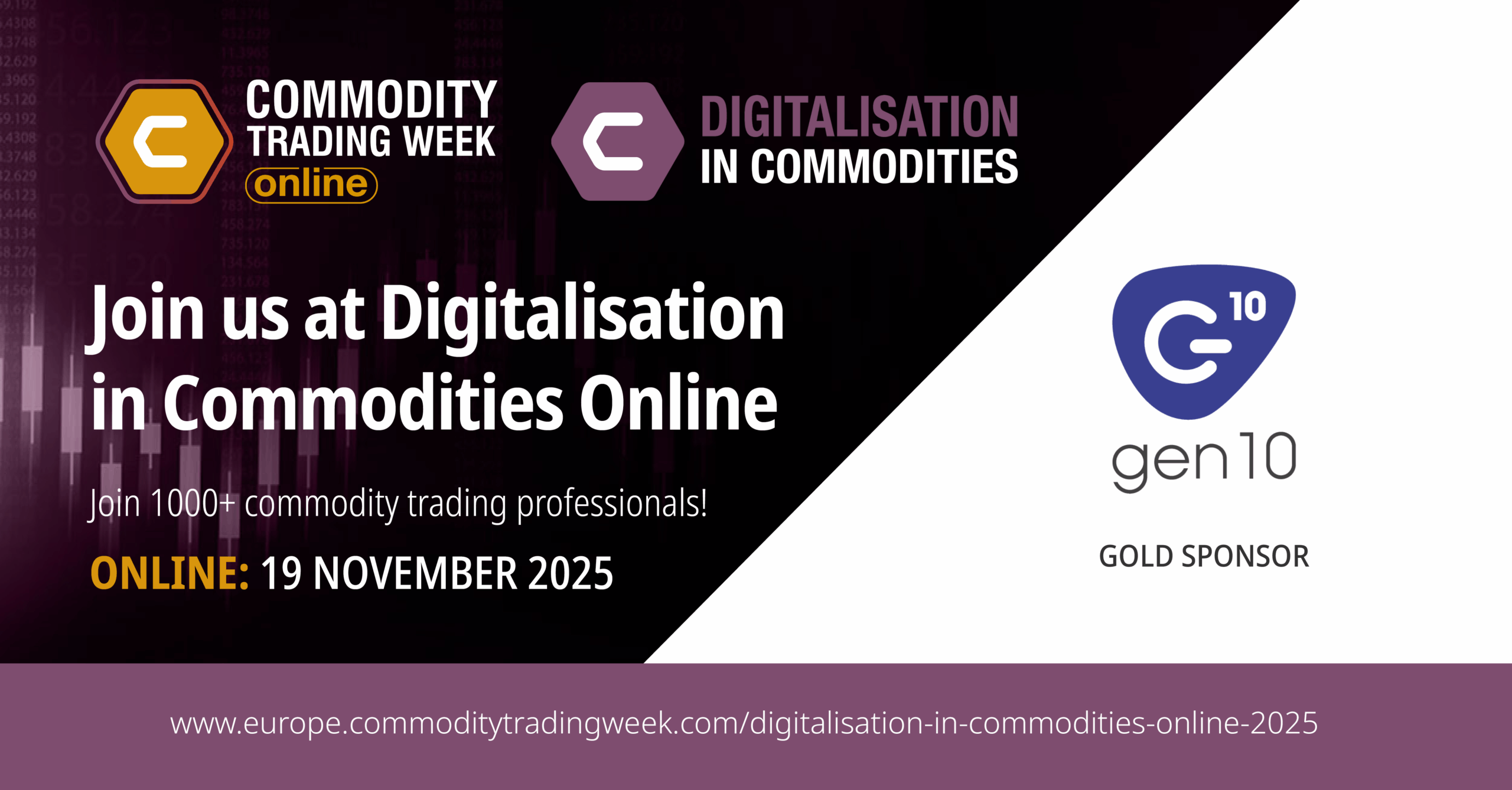
Introduction
With the EU Deforestation Regulation (EUDR) set to reshape how agri-commodity supply chains operate, businesses are grappling with its implications. The regulation aims to curb deforestation by ensuring that products entering the European Union (EU), such as coffee, cocoa, palm oil, and soy, are not linked to deforestation or forest degradation. Originally set to come into effect in 2024, the enforcement deadline has now been delayed to December 2025.
This delay has sparked mixed reactions across the industry, from relief among companies still aligning their operations to compliance challenges, to frustration from those who had already made significant strides in preparation.
In a recent panel discussion at Commodity Trading Week Europe, Carlos Mera, Head of Agri Commodities Market Research at Rabobank, and James Gracey, Global Technology Manager at JDE Peet’s, joined Richard Williamson of Gen10 to share insights into the industry’s response. They discussed the impact of the delay, the challenges around traceability, regulatory ambiguity, satellite verification, and the unintended consequences that could reshape global sourcing strategies.
Relief, Frustration and the Reality of the Delay
While the delay in implementing the EUDR was broadly welcomed by the industry, the response has been mixed. Some businesses—particularly those that invested early in compliance—expressed frustration that buyers postponed action until enforcement becomes mandatory.
Others, especially large corporate players, were relieved. The delay provides time to align processes, gain clarity on the actual due diligence requirements, and avoid the chaos that would have arisen from many companies not having their mitigations in place.
Although the delay buys time, it doesn’t remove the challenges of complying with the EUDR. Questions remain about how to implement compliance and reporting processes, with variations also possible between manufacturing units of the same company since each country has its own regulatory authority.
Satellite Imagery and the Risk of False Positives
A major concern raised was the reliability of satellite imagery in detecting deforestation, especially in tree crops like coffee or cocoa.
These plantations can be difficult to distinguish from primary forest, particularly as satellite image resolution is currently only 20m. Renovations and replanting of older coffee trees can also give a false positive as this can look like deforestation. And the other consideration is regarding the accuracy of geolocation coordinates.
There is also ambiguity around how appeals will be handled, if they will be permitted at all.
Complexity in Traceability and Aggregation
The level of traceability required by the EUDR presents hurdles for bulk shipping and single-bag containers. Palm oil, soybeans and cocoa often pass through aggregation points for shipping and processing, mixing outputs from multiple producers. In such cases, mapping supply chains to the level of individual farm plots becomes an immense data challenge.
Some producing countries like Brazil are addressing this with national traceability platforms, offering cost-effective, centralised systems. Others may have to fall back on expensive third-party certifications.
Unintended Consequences: Smaller Producers at Risk
The panel warned that the regulation—while well-intentioned—may lead to unintended market distortions. Larger farms and exporters are more likely to secure EU market access, as all EUDR-compliant stock in a warehouse will need to be physically segregated, or the entire area could become non-compliant. Smaller producers and cooperatives therefore risk exclusion.
This could result in:
- Market consolidation, favouring the largest players
- Redirection of non-compliant goods to non-EU markets
- Minimal impact on actual deforestation in the short term
There’s also concern that regulation may become more of a bureaucratic compliance challenge, creating an “admin monster” and losing sight of the environmental benefit.
Lessons from the Delay: What Has the Industry Learned?
Despite frustrations, the regulatory push has created some positive change. One key takeaway is the value of improved digitalisation, particularly around traceability and supplier data exchange.
There is growing awareness that:
- Supply chain transparency must become embedded, not reactionary
- Traceability platforms and shared data protocols are essential infrastructure
- Compliance must go beyond certification—it requires system-level reform
What Happens Next?
The regulation’s future enforcement remains uncertain. The 4% turnover penalty is a strong deterrent, but whether regulators will apply it—especially in the early years—is unclear.
Speakers also raised questions about:
- Cross-country consistency in application
- How appeals for false deforestation flags will be handled
- The role of supermarket and brand-level enforcement further down the value chain
- The geopolitical implications of the EU setting sourcing standards abroad
Conclusion:
The EUDR is already reshaping sourcing behaviour, and you only have months left to do the same.
Businesses that see this as an opportunity to future-proof their supply chains, rather than just a regulatory hurdle, will be best positioned to handle what’s coming next.
The regulation may not be perfect, but it’s accelerating the industry’s focus on traceability, risk management, and transparent procurement. The real takeaway? Digital transformation and compliance are no longer optional; they’re inseparable.


